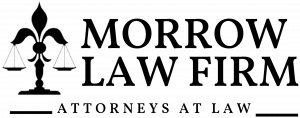
Legal Implications of Amusement Park Accidents: Understanding Injury Liability in Recreational Settings
Morrow Law Firm, based in Opelousas, Louisiana, is led by attorneys William P. Morrow, John Michael Morrow, Jr., and Stephen M. Morrow. The firm regularly handles cases involving workplace injuries, industrial incidents, and complex liability claims. Attorney William P. Morrow notes that injury cases involving amusement parks often present challenges related to corporate ownership structures, third-party contractors, and limited safety oversight.
“Amusement park accident cases frequently involve overlapping responsibilities,” said William P. Morrow. “The party managing the park may be separate from the entity that owns the land, designs the rides, or provides staffing. Determining liability often requires an investigation into maintenance records, inspection protocols, and staff training policies.”
According to data from the U.S. Consumer Product Safety Commission (CPSC), thousands of amusement park injuries are reported each year, ranging from broken bones and concussions to traumatic brain injuries and, in rare cases, fatalities. These incidents can occur on roller coasters, water rides, or even on the ground due to crowd surges, trip hazards, or falling equipment.
The legal classification of an amusement park often affects how liability is assessed. Fixed-location parks—those operating permanently in one location—are subject to state-level regulatory requirements. In Louisiana, this includes periodic inspections and safety certifications. However, mobile amusement setups, such as traveling fairs and carnivals, may operate under less consistent oversight. This disparity can influence the outcome of an injury claim.
In many cases, injuries result from a combination of negligence factors. These might include ride operator error, mechanical defects, lack of routine maintenance, missing safety barriers, or insufficient signage warning of risks. Some rides have height, weight, or health restrictions that, if not communicated clearly, can contribute to preventable accidents.
“The foundation of most amusement park injury claims is premises liability,” said Morrow. “The operator has a legal duty to provide a reasonably safe environment for guests. When that duty is breached—whether through negligent maintenance or inadequate staffing—the injured party may pursue damages.”
While many assume that liability rests entirely with the park, injury cases often require identifying whether a manufacturer, maintenance contractor, or outside vendor contributed to the cause. Ride manufacturers may face product liability claims if a defect in design or manufacturing is uncovered. Contractors responsible for ride assembly or maintenance may also be held accountable if evidence shows a failure to follow safety protocols.
In addition to mechanical or operational issues, crowd control remains a significant factor in large-scale amusement parks. Incidents involving trampling, falling barricades, or insufficient emergency exits have led to lawsuits in the past. Liability for these events may hinge on whether the venue had proper staffing, surveillance, and safety procedures in place to anticipate and prevent such outcomes.
Parks often include disclaimers on tickets or signage that attempt to limit legal liability, but these disclaimers do not necessarily protect the operator from negligence claims. Courts generally do not uphold waivers that attempt to release a party from liability for gross negligence or willful misconduct. The enforceability of such disclaimers depends on jurisdiction, the clarity of the language, and the specific circumstances of the incident.
Another important factor involves the injured party’s actions. In some cases, contributory or comparative fault may apply—for example, if an individual bypassed a safety warning, failed to follow staff instructions, or engaged in reckless behavior. Louisiana follows a comparative fault model, which means the amount of damages recoverable may be reduced in proportion to the injured party’s own negligence.
Timely reporting and documentation of the incident are essential. Most amusement parks require internal incident reports to be filed at the time of the event. Gathering witness statements, securing medical evaluations, and preserving any available photo or video evidence can significantly impact the success of a future legal claim.
For families dealing with the aftermath of a serious injury or fatality, the legal process can be emotionally and logistically overwhelming. In cases involving children, the legal framework may include additional considerations for guardianship, consent, and future damages. Courts often take special care in evaluating claims involving minors, particularly those that involve permanent disability or long-term medical care.
Amusement park accident litigation often spans multiple legal disciplines, including tort law, product liability, contract law, and insurance disputes. Investigations typically involve collaboration with engineers, safety inspectors, and medical professionals to determine the origin and impact of the incident.
Understanding the rights of injured individuals under Louisiana law—and under federal safety guidelines when applicable—is an essential first step toward recovery and accountability. The legal landscape surrounding amusement park injuries continues to evolve alongside advances in ride technology and shifts in regulatory enforcement.
Morrow Law Firm, located in Opelousas, is led by William P. Morrow, John Michael Morrow, Jr., and Stephen M. Morrow. The firm continues to monitor developments in injury-related litigation and represents individuals involved in a range of liability matters across Louisiana.
For more information on legal considerations following an amusement park injury, refer to state and federal safety guidelines, premises liability statutes, and applicable product safety regulations.
Morgan Thomas
Rhino Digital, LLC
+1 504-875-5036
email us here
Visit us on social media:
Facebook
Distribution channels: Culture, Society & Lifestyle, Insurance Industry, Law
Legal Disclaimer:
EIN Presswire provides this news content "as is" without warranty of any kind. We do not accept any responsibility or liability for the accuracy, content, images, videos, licenses, completeness, legality, or reliability of the information contained in this article. If you have any complaints or copyright issues related to this article, kindly contact the author above.
Submit your press release

